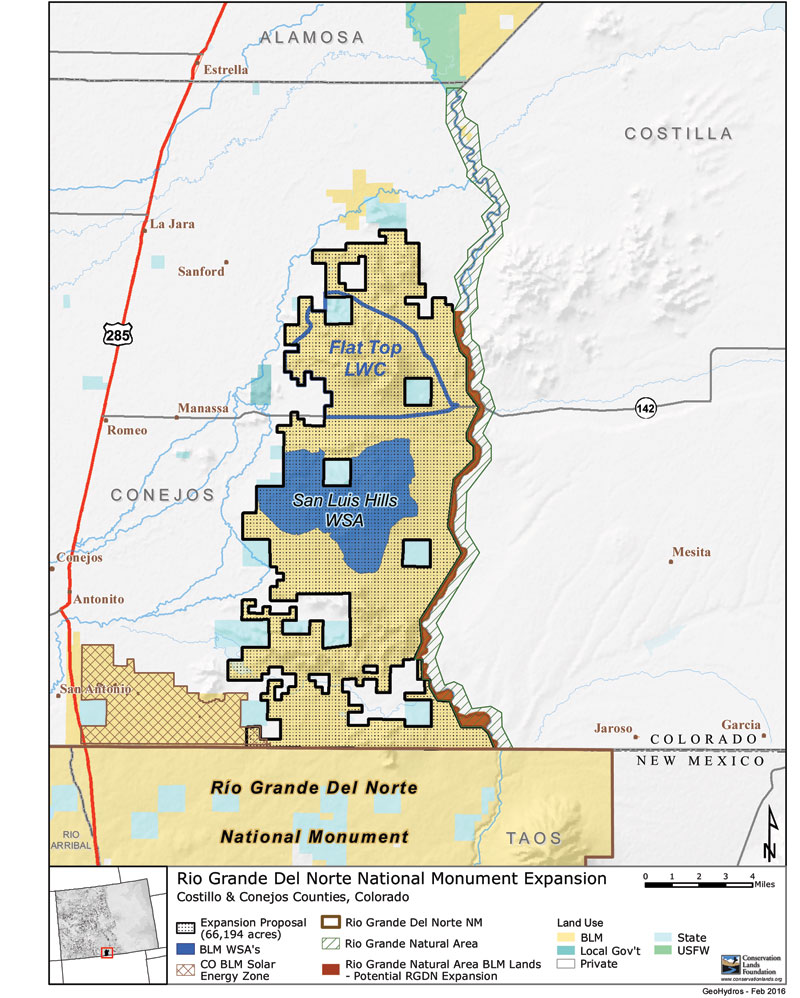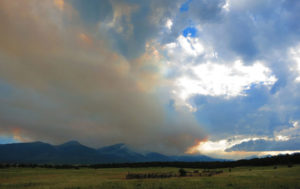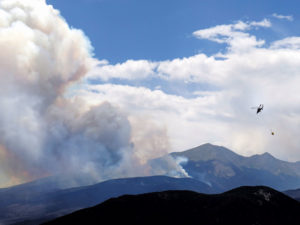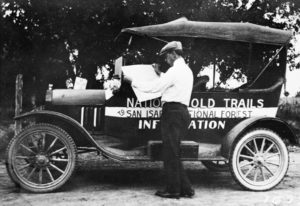By Anthony Guerrero
In March 2013, President Barack Obama, using executive authority under the Antiquities Act, designated 242,000 acres in Taos, New Mexico, as public lands. This area became a national monument known as the Rio Grande del Norte National Monument. As a result, the land, its rich Hispanic and Native American heritage and the wildlife habitat are protected and preserved. The monument ends right at the Colorado and New Mexico border. Some citizens in Colorado believe this designation should be expanded to include a portion of the San Luis Valley.
Conejos Clean Water (CCW), an activist group based in Antonito that fights for environmental, social, and economic justice believes that around 66,000 acres of land in the Valley should be included as part of the Rio Grande del Norte National Monument. CCW is no stranger to tough battles. Begun in 2010, in response to nuclear waste being transferred along the San Antonio river in the town of Antonito, the grassroots organization hopes to bring the same success and influence developed at that time to the monument expansion discussion.

Right now, opposition and support for the expansion seems to be evenly divided. “People have concerns. They are mostly wondering will I still be allowed to graze, to hunt, to fish and go pinon nut hunting? The answer to that is yes,” said CCW Executive Director Justin Garoutte. He explains that the land is currently mostly owned by the Bureau of Land Management. This means that the land must be allowed to be developed for multi-use purposes, including the oil and gas industry. “Getting a national monument designation means the land is taken off the table for exploitative extractive industries such as oil and gas.”
Two big issues CCW and the expansion effort is facing is claims that grazing will no longer be allowed and that a national monument designation would adversely affect water rights. “It couldn’t be further than the truth that grazing would no longer be allowed. Fifty percent of our board of directors are grazers or ranchers. We wouldn’t be able to push something like that with them on our board and we don’t want to. We view grazing as essential to our local economy and essential to our way of life. All of our ancestors came from northern New Mexico,” said Garoutte.
[InContentAdTwo]
In the San Luis Valley water rights are very important and are at the forefront of many ventures. As a result many groups including CCW are sometimes met with strong opposition from certain individuals and groups representing water interests. CCW makes it clear that they also advocate for clean water and that is demonstrated in their successful effort against the nuclear waste that started their grassroots organization. Two board members of the Rio Grande Conservation District and some Conejos County Commissioners have constantly made it known they are adamantly opposed to the proposal.The Rio Grande Conservation District as a whole board has decided to remain neutral at this point and is working with CCW to positively move forward. Anna Vargas, a project coordinator for CCW has sat down and met with these individuals to attempt to assuage their concerns. “Our water and land are our most precious resources and we need to protect that,” said Vargas.”The district has been very respectful and listened to us as we’ve listened to them,” she said.
“If you declare a national monument, you carry with it the implication of a reservation of water sufficient to fulfill the monument,” said water district attorney David Robbins. Other district members and Conejos County Commissioners have spoken up in public meetings stating that the monument serves no new purpose, is unneeded and is not wanted by the community. The Antiquities Act would prevent a designation if there was enough public opposition. CCW does not believe that to be the case.
CCW has sat down with the district and listened to their concerns with the expansion. “Several of the district board members have been pushing for a letter of opposition. They haven’t done a support or opposition letter yet because they want to see how it all turns out. We are trying to form a stakeholder group with a neutral facilitator. Dave Robbins has offered drafted language that protects water rights in the district. Adams State University professor Armando Valdez has also offered language which preserves the traditional use of the land such as grazing, hunting and piñon picking,” said Vargas.
Recently the U.S. House of Representatives voted in favor of an appropriations bill that would prevent further national monument designations in Colorado. Representative Scott Tipton voted in favor of the bill. If it passes the United States Senate, President Obama is expected to veto the bill. “The president’s use of the Antiques Act to unilaterally designate massive blocks across the west as national monuments without local input or support from the surrounding communities amounts to a complete disregard for the will of the American people and their ability to have their voices heard. The process for designating public lands should start in communities, not the White House,” stated Tipton.
CCW has started this proposal, as many of their others at a grassroots and community level. They have knocked on doors, called their friends and neighbors and held public meetings. They have even traveled to Washington D.C. to meet with Tipton and other legislators. “When we went, Tipton talked to the opposition but walked out when we came in. That is really disappointing,” said Garoutte. They also expressed gratitude to Colorado House District 62 Representative Edward Vigil for his support. “He’s about the only elected official who has been very vocal in lending support.”
The fight for this will continue. Other lands that have been designated as national monuments had intensive debates for lengthy amounts of time. CCW and its supporters believe the effort is worthwhile. The area is home to Kiowa Hill, which was a battle site between Utes and the Kiowa and a place that has been inhabited by humans for over 12,000 years. CCW is prepared to keep fighting outside interests from developing the land for what they believe to be exploitative purposes. “If we have oil and gas come in, that only helps the economy for a while. It eventually runs out. We are looking at the bigger long term picture … I believe it’s important for it to become a national monument. I want the land here to remain the same for future generations. I want my little girl, her kids and my great-grandkids to enjoy it. I want it to stay pristine. When you go there, you go back in time. Indigenous people were here hundreds of years ago. It pounds at your heartstrings, it’s really phenomenal. There are not many places on this earth that are like that,” said Vargas.
One Comment
Comments are closed.





Thank you so much for this great piece and coverage on our push for environmental justice here in the Conejos Land Grant Region!